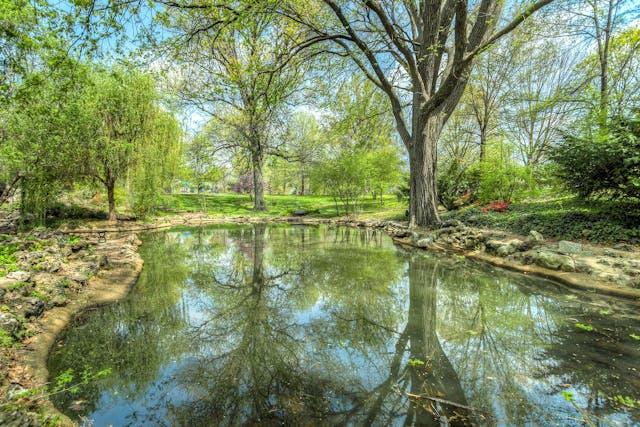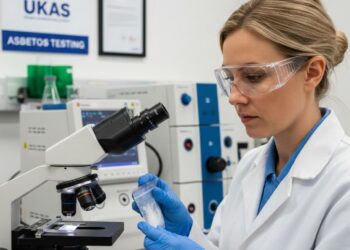Ponds, both natural and artificial, afford invaluable ecological, aesthetic, and recreational benefits. Yet one of the most common and difficult problems pond owners commonly face is algae. While some algae are entirely natural and even beneficial, the excessive algae blooms that form in some ponds are detrimental; causing a dangerous depletion of dissolved oxygen, harming the pond’s aquatic life, and making the water’s surface downright unsightly and sometimes odoriferous.
The article you are about to read explores the pond owner’s prime weapon against excessive algae – adequate pond water aeration, along with the many other benefits adequate aeration provides the pond and its owner. In addition to learning how to properly practice algae control for ponds, it is also necessary to understand what algae is and how it functions:
Understanding Algae Growth
Simple aquatic organisms known as algae grow in nutrient-rich environments, where they reproduce swiftly and profusely. Their population explosions are induced principally by three stimuli:
Nutrient Availability
Algae need nitrogen and phosphorus for growth. These nutrients frequently enter ponds via runoff that carries fertilizers, organic matter, and animal waste.
Sunlight Exposure
Algae grow faster when they are exposed to sunlight. They need the energy to produce a lot of photosynthesize to thrive.
Stagnant Water
Water that is not moving allows algae to build up. Still water permits the nutrients that sustain algae and other aquatic plants to concentrate. Stagnant water is the ideal place for algae to grow.
Under optimal conditions, algae can grow excessively, leading to a variety of problems such as depletion of oxygen, the release of harmful toxins (in the case of certain blue-green algae specie, and the killing of fish and other resident aquatic life.
What Is Pond Aeration?
Pond aeration is the process of increasing the amount of dissolved oxygen in a pond and the movement of water within it, and is crucial for proper algae control for ponds. Different kinds of aeration systems can do this, surface aerators, fountains, and bottom-diffused aeration systems are some of the more common ones.
The main function of these systems is to enhance the circulation of oxygen in the pond. This circulating oxygen keeps the pond in a more healthy state, preventing it from regressing into the algae-infested alternative.
How Aeration Prevents Algae Growth
Decrease in Nutrient Accessibility
Another critical part in aeration functions is reducing excess pond nutrients. This, in turn, helps to control algae limits. The introduction of oxygen into the water serves to make the existing aerobic bacteria more active, and it also makes room for more beneficial bacteria.
Because these bacteria serve as the pond’s appetite, so to speak, for nitrogen, phosphorus, and organic matter, what they do prevents those nutrients from reaching algae in sufficient amounts and in a timely enough manner that algal blooms can occur.
Algal Bloom Conditions: Disruption of Conditions
Disrupting the favorable conditions that promote algal blooms is another benefit of using an aerator. It interferes with such conditions as:
- Short supply of dissolved oxygen in the water
- Stratification, or layers, of water that are of different temperatures and densities
- Light
- Plentiful nutrients – especially nitrogen and phosphorus
Water stratifies when it is able to separate into layers based on differences in temperature or oxygen content. When it is continuously circulated, the water is never allowed to form those unhealthy layers. Aeration also ensures that nutrients do not accumulate in one place, minimizing localized regions of high nutrient concentration.
Enhanced Oxygen Concentration for Underwater Organisms
Dissolved oxygen levels throughout a pond are raised by aeration, creating conditions in which fish and other aquatic organisms can live and grow. If you think of a pond as any other body of water, with algae and three-dimensional space, a well-oxygenated pond makes conditions favorable not only for fish but also for beneficial bacteria.
Mitigating Dangerous Anaerobic Environments
Ponds can develop low-oxygen (anaerobic) conditions, especially in deeper zones, where there is little water movement. This is not good for the pond or its aquatic life. Anaerobic conditions foster the growth of harmful bacteria that use sulfate and other substances instead of oxygen when they metabolize.
These bacteria release toxic gases such as hydrogen sulfide and methane. These gases deplete oxygen even further and create conditions that allow certain harmful algae species to dominate. To cope with all this, the pond simply needs more oxygen.
Stratification Prevention and Regulation of Temperature
In warm seasons, ponds frequently undergo thermal stratification, where the water at the top becomes warmer and enriched with oxygen, while the deeper water layers grow colder and become entangled with oxygen. Stratification leads to poor circulation, which makes the pond stagnant and turns it into a potential algae factory.
This is what aeration is designed to prevent. It helps to break down the stratified layers by mixing the pond water, distributing oxygen more evenly throughout the pond, and ensuring there are no stagnant zones that algae can use as a reproductive incubator.
Decrease of Floating Rubbish and Organic Material
Excess organic material fuels algae growth in ponds. Plants and fish contribute to that organic material, particularly when plants die and fish make waste. When we add oxygen to ponds, like in the process of aeration, we help those ponds become better at breaking down the organic material.
The better our ponds are at breaking that material down, the fewer nutrients they have available for algae to use, and the lower the chance that they’ll experience a nasty algae bloom both in the summer and at other times of year.
Types of Pond Aeration Systems
Algae control for ponds can be performed with a few different aeration techniques. The right system to use depends on several factors, including the depth and size of the pond, as well as unique specifications.
Surface Aerators
Paddlewheel aerators and surface aerators like fountains agitate the top layers of water, significantly enhancing the exchange of oxygen between the water and the air. Fountains and paddlewheel aerators are effective in small and medium ponds.
However, if implemented in deep ponds they will have little if any effect on the lower layers of the pond, which can become hypoxic (lack of oxygen) and anoxic (totally lacking oxygen).
Bottom-Diffused Aeration Systems
Air compressor systems release air through diffusers placed at the bottom of the pond. The rising air bubbles create vertical circulation. The vertical circulation creates a horizontal gradient of diversity in the pond. The mixing of the air in the pond prevents stratification.
This means that the different layers in the pond don’t stay separated for too long. In a pond that doesn’t stratify, the oxygen is mixed through the water, keeping it oxygenated on a level that’s good for the living things in the pond.
Windmill and Solar-Powered Aerators
In remote or off-grid situations, windmill and solar-powered aerators are viable and eco-friendly alternatives to pond aeration. These systems are closely related to the mechanical aerators of the past but depend on renewable energy sources to power them.
Waterfall and Stream Features
Artificial waterfalls and streams create movement and naturally oxygenate the water. They reduce stagnation and enhance aeration. There are flowing-water systems that aerate as effectively as streams.
Stream systems require more space and energy and usually work best in combination with other aeration devices for complete oxygen distribution.
Additional Strategies to Support Aeration
Although controlling algae by aeration is very effective, combining it with other pond management tactics amplifies its benefits even further.
Nutrient Control
Create buffer zones planted with native vegetation to limit the runoff of fertilizers. Additionally, excess waste contributes to nutrient overload. One way to limit this waste is to reduce the fish population. You can also put pond filters in place to catch organic debris before it breaks down.
Shading and Aquatic Plants
Aquatic plants, whether floating or submerged (such as the water lily and duckweed), reduce sunlight penetration into the water and limit the growth of algae. At the same time, aquatic plants and algae are mutually exclusive; they cannot occupy the same space at the same time. Algae must grow in unobstructed areas; otherwise, it will not grow.
Beneficial Bacteria Treatments
Supplements containing beneficial bacteria promote the natural breakdown of organic material and nutrients – even furthering the effects of aeration. Just as with any other ecosystem, each aspect that functions properly and efficiently has an overflow effect to other aspects and functions of the overall system.
Using Aeration to Manage Algae Control for Ponds
Air pumps work hard to keep algae from blooming in the pond by doing three fundamental things; firstly, they increase the oxygen level in the pond water. Next, they enhance the breakdown of organic matter, which, if left untouched, could make the pond too rich in nutrients and could result in an algae bloom.
And finally, they create turbulence, or choppiness, on the water’s surface, which is the aeration system’s way of keeping the pond’s ecosystem just right for preventing algae from blooming. Addressing these issues through aeration will help to ensure your pond stays healthy and visually appealing for years to come.







